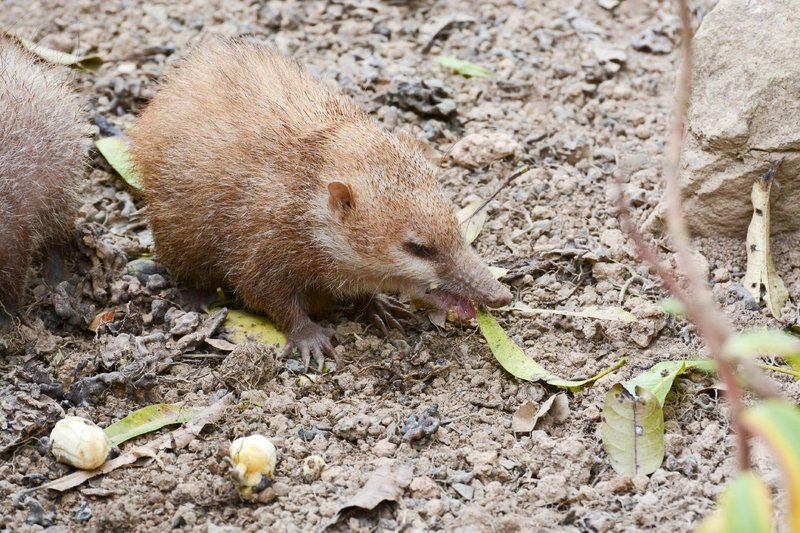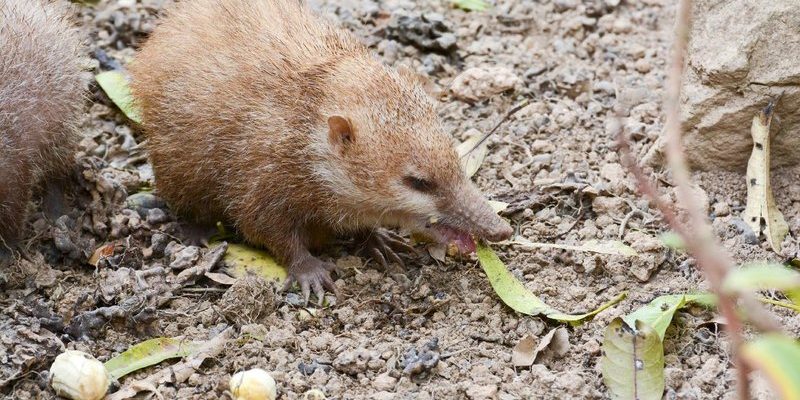
When we think about endangered species, we often picture the big animals like elephants or tigers. However, every species, no matter how small or seemingly insignificant, plays a role in its ecosystem. The tenrec, with its varied species and unique adaptations, has a special place in Madagascar’s biodiversity. Unfortunately, habitat loss and other threats are pushing these delightful creatures towards the brink. So, is the tenrec endangered? Let’s explore the facts and figures behind their current status.
Understanding the Tenrec: Their Habitat and Species
The tenrec family includes over 30 species, each with its own unique traits and habitats. These creatures thrive in Madagascar’s forests, grasslands, and even in some neighboring islands. Tenrecs are nocturnal, meaning they come alive at night to forage for food, which consists of insects, worms, and fruits. It’s kind of like having a little cleanup crew out there in the wild, making sure the ecosystem stays neat and balanced.
The most recognizable species is the Greater Tenrec, which can weigh up to 3.5 kilograms (about 7.7 pounds) and is covered in spines. But you might come across others like the Madagascar Tenrec or the Web-footed Tenrec, each with its own distinct physical characteristics and behaviors. Honestly, they’re an entire family of little wonders, showcasing the diversity that Madagascar is known for.
However, the tenrec’s habitat is under threat. Deforestation, driven by agriculture and logging, is rapidly destroying their homes. Imagine a world where your favorite park suddenly vanished; that’s how tenrecs feel with every tree cut down.
Are Tenrecs Endangered? The Current Status
So, what’s the scoop on their conservation status? According to the IUCN Red List, some tenrec species are considered vulnerable or endangered, while others haven’t been evaluated yet. This mixed bag means that while some tenrecs are hanging on, others are in serious trouble. You might be surprised to learn that the Madagascar Hedgehog Tenrec, for example, is listed as vulnerable, prompting concern among conservationists.
The reason for this is not just habitat loss; climate change plays a significant role, too. Rising temperatures and changing rainfall patterns can disrupt their delicate ecosystems. When you think about it, tenrecs are like the canaries in the coal mine — their decline signals a deeper issue affecting the environment as a whole.
To truly understand the tenrec’s situation, we need to look at the conservation efforts in place. Organizations are working tirelessly to protect their habitats through reforestation programs and awareness campaigns. Remember, it’s a team effort – every small action counts in making a difference.
Threats to Tenrec: Key Challenges They Face
The challenges facing tenrecs are numerous, and it’s essential to recognize each one to understand their plight fully. Here are some of the key threats they encounter:
- Deforestation: As mentioned, logging and agricultural expansion are primary contributors to habitat loss.
- Climate Change: Changes in weather patterns can make it difficult for tenrecs to find food and suitable living conditions.
- Invasive Species: Animals and plants introduced to Madagascar can compete with tenrecs for resources.
- Human Encroachment: As humans expand into tenrec habitats, the animals find themselves squeezed out of their homes.
These threats create a challenging environment for these creatures. It’s like trying to play your favorite sport with half the field taken away – the odds aren’t in their favor. Conservationists are trying to combat these challenges through various strategies, including habitat protection and sustainable land use practices.
Conservation Efforts: What’s Being Done
Now, let’s talk about the good stuff — what’s being done to help tenrecs? Several organizations and local communities are stepping up to protect these unique animals.
For starters, conservation programs focus on creating protected areas in Madagascar. These safe zones allow tenrecs to thrive, free from human interference. Many of these initiatives also involve educating local communities about the importance of biodiversity and the benefits of protecting tenrecs and their habitats.
Another exciting development is community-based conservation. This approach empowers local people to become stewards of their environment. By involving locals in conservation efforts, they gain a stake in the health of their ecosystems and can help monitor tenrec populations.
Research and monitoring are also crucial. Scientists continuously study tenrec behavior, population dynamics, and habitat requirements to inform conservation strategies. Data gathered helps in making smart decisions that could save these delightful animals from extinction.
The Role of Education in Tenrec Conservation
Education is a powerful tool in conservation efforts. By raising awareness about the tenrec and the challenges it faces, we can inspire more people to get involved.
Many organizations run educational programs in schools and communities, teaching children and adults about Madagascar’s unique wildlife. Picture a classroom filled with excited kids learning about tenrecs and even participating in local conservation projects. This kind of engagement fosters a sense of responsibility and connection to the environment.
Social media plays a part, too. Exciting photos, videos, and stories shared online can reach people all over the world, rallying support for tenrec conservation. When you see how cute and fascinating these animals are, it’s hard not to care about their future.
Furthermore, funding for conservation often comes from awareness campaigns. The more people know about the tenrec’s plight, the more likely they are to support conservation initiatives financially.
What Can You Do to Help Tenrecs?
You might be wondering how you can pitch in to help tenrecs. While it’s great to support global initiatives, there are simple actions you can take at home, too. Here are some ideas:
- Educate Yourself: Learning more about tenrecs and their ecosystems helps you understand their importance.
- Support Conservation Organizations: Donating to reputable organizations working to protect tenrecs can make a real difference.
- Spread the Word: Share your newfound knowledge with friends and family to raise awareness.
- Choose Sustainable Products: Supporting sustainable practices helps protect habitats from destruction.
It’s pretty empowering to realize that even small actions can contribute to the bigger picture. Every effort counts when it comes to saving the tenrec and other endangered species.
In summary, the tenrec is indeed facing significant threats that put them at risk of becoming endangered. However, through ongoing conservation efforts and community engagement, there’s hope for their future. These tiny creatures are more than just charming animals; they are vital components of their ecosystems.
By educating ourselves, spreading the word, and supporting conservation initiatives, we can all play a role in ensuring that tenrecs continue to thrive in Madagascar and beyond. When we come together to protect these wonderful animals, we not only help them but also contribute to the health of our planet. So, let’s keep our eyes on the tenrec and do our part to ensure it doesn’t fade into oblivion.

